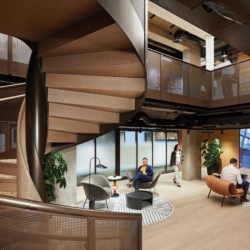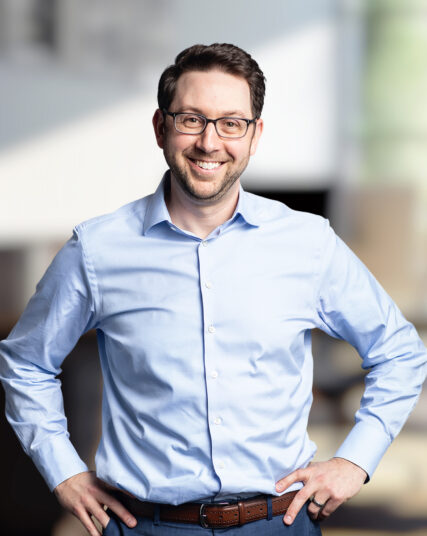[ad_1]
 Round a 3rd of corporations already use wearables to trace their staff’s exercise and higher gauge their bodily, psychological and emotional wellbeing, in keeping with Deloitte’s 2024 World Human Capital Tendencies Report. Deloitte predicts that utilization will enhance to 2 thirds by 2027. Neurotechnology, which makes use of electronics to learn mind exercise and may contextualise worker behaviour and interactions, can also be anticipated to ramp up dramatically in use in that timeframe, from 3 % to 31 %.
Round a 3rd of corporations already use wearables to trace their staff’s exercise and higher gauge their bodily, psychological and emotional wellbeing, in keeping with Deloitte’s 2024 World Human Capital Tendencies Report. Deloitte predicts that utilization will enhance to 2 thirds by 2027. Neurotechnology, which makes use of electronics to learn mind exercise and may contextualise worker behaviour and interactions, can also be anticipated to ramp up dramatically in use in that timeframe, from 3 % to 31 %.
For architects and designers, this development is a present. There’s a lot that we all know intuitively about the way to design area effectively – for instance, to guarantee that there’s loads of pure mild. Whereas our instinct relies on expertise, it’s more and more helpful to have the ability to again this up with knowledge. Quantifying your instinct about how greatest to design area after which proving that it’s working has not at all times been attainable to the extent that it’s at this time.
Beforehand, surveys, observations and interviews have been generally used to know how the constructed setting is impacting folks. We all know that these strategies of analysis have their limitations. An individual might not bear in mind every thing about how they skilled an area, and even have been conscious of how the area was affecting them on the time.
Biometric knowledge – of the type you’d get from wearables and neurotechnology – is free from bias and offers us with rather more granular element about how individuals are feeling and responding. It’s a nice instance of utilizing rising means to raised perceive person suggestions in area. Physique and thoughts are related, and electrical exercise from the mind and coronary heart tells us loads about ranges of happiness, consolation or stress.

Alex Dunham is Managing Director of Ark, an HLW Specialty Studio
There are various instruments we are able to use, from headsets to extra acquainted smartwatches to watch wellbeing. Finally, this tech will likely be built-in into different issues folks put on each day, like glasses and headphones. As know-how turns into extra subtle, we will seize much more particular sorts of information, each from folks and from the constructed setting itself, in addition to how folks work together with it.
The British Council for Places of work report, Wearables within the Office, highlighted the potential of embedding sensors in objects corresponding to furnishings and having them work together with wearables to watch wellbeing. Take the clever sit–stand desk, for instance: the wearable detects again pressure whereas sitting, indicators the desk to rise and nudges the individual to face.
When HLW moved workplace in 2020, we used biometric units to check our new area to the outdated. We’re at all times investigating new instruments and strategies to be on the leading edge and higher inform our designs, and we recognised that the transfer was a uncommon alternative to have the identical folks working for a similar organisation put on the identical sensors in numerous places. It was an thrilling examine as a primary step in higher understanding this know-how and forwarding the dialogue on its use in future follow.
In our outdated workplace, the café space was buried on the again and in a excessive site visitors space. From the brainwave patterns of individuals utilizing that area we may see they didn’t expertise it that in a different way from different work areas. Within the new workplace, with a welcoming open idea kitchen with a view to the outside, we have been in a position to see an enormous change in brainwave patterns, reflective of it being a extra enjoyable, social area.
Our workplace transfer was simply earlier than the pandemic hit. Apparently, the pandemic itself drove a surge in curiosity from employers in wearables. For instance, the Monetary Occasions reported in 2020 that resort firm Las Vegas Sands purchased 1,000 Oura rings to trace early signs, predict who would get sick and handle staffing.
Much more apparently, the rise of distant work because of the pandemic appears to be a motivating think about staff granting entry to their knowledge. Maybe as a manner of constructing mutual belief, or just feeling extra related. A PwC ballot in 2014 discovered that 31% of individuals can be keen to make use of sensors and wearables to trace productiveness in methods their employers may entry. In 2021, this had risen to 44%.
Clearly, transparency about how private knowledge is used is vital, as in different areas of our fashionable lives. If we would like folks to interact with new know-how, then we’d like to have the ability to reveal the way it will profit them. Biometric knowledge opens up an entire new world of potentialities for monitoring the efficiency of buildings and areas, enabling steady enchancment to assist customers’ wellbeing.
Because of this designers and purchasers will have to be open and keen to make modifications off the again of their findings, not simply to pat themselves on the again about what they obtained proper. Let’s embrace the journey collectively.
[ad_2]

